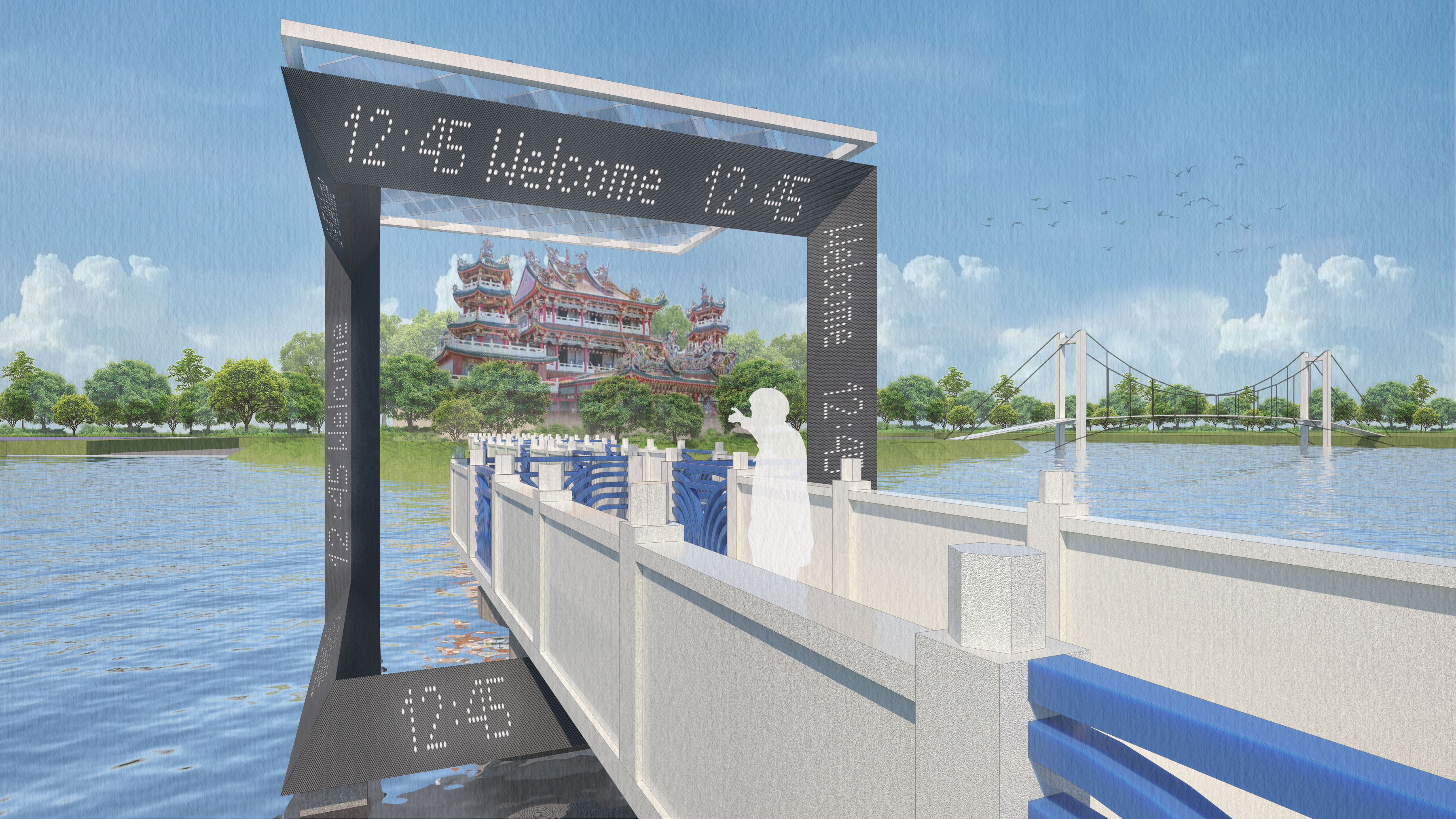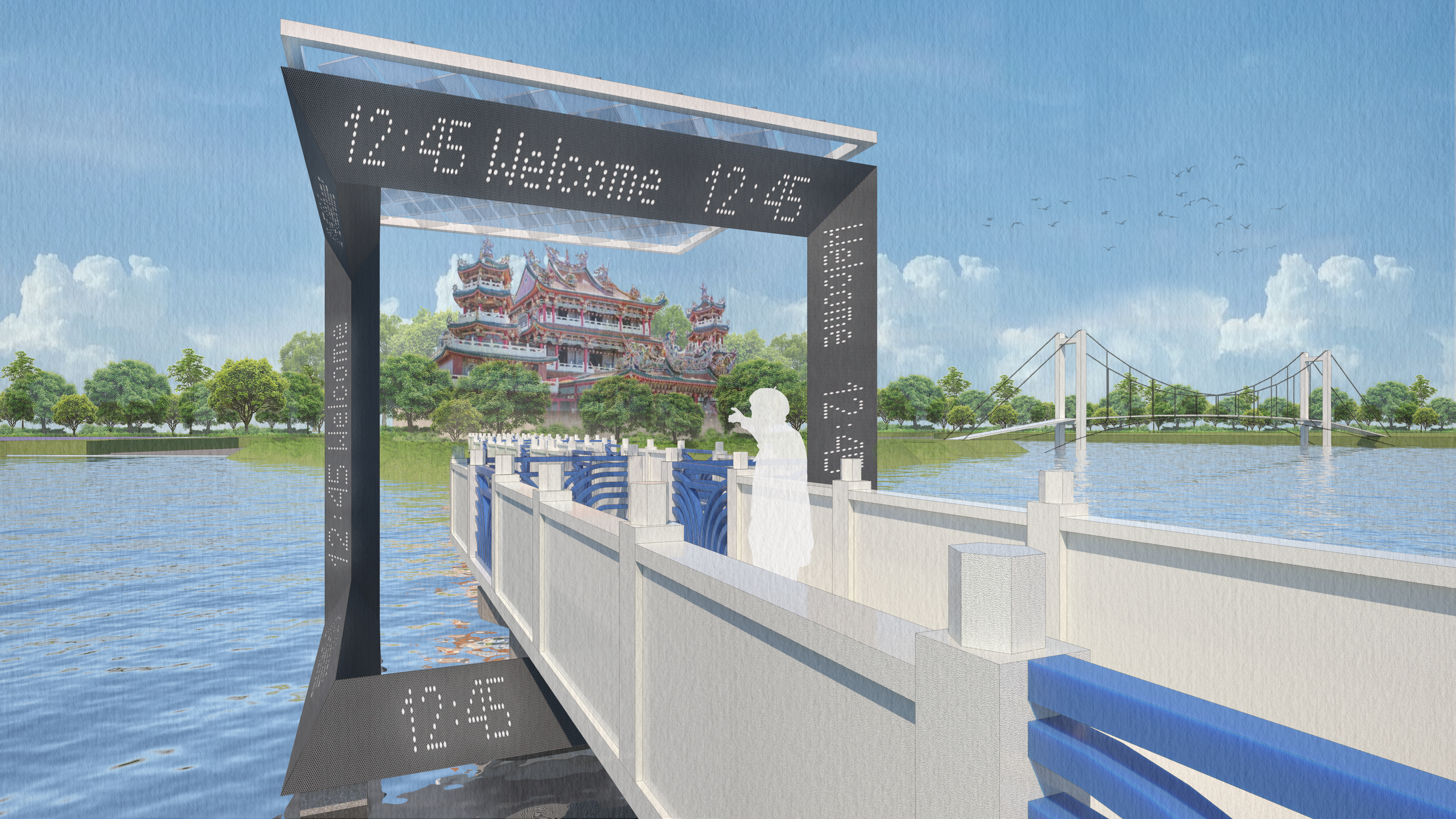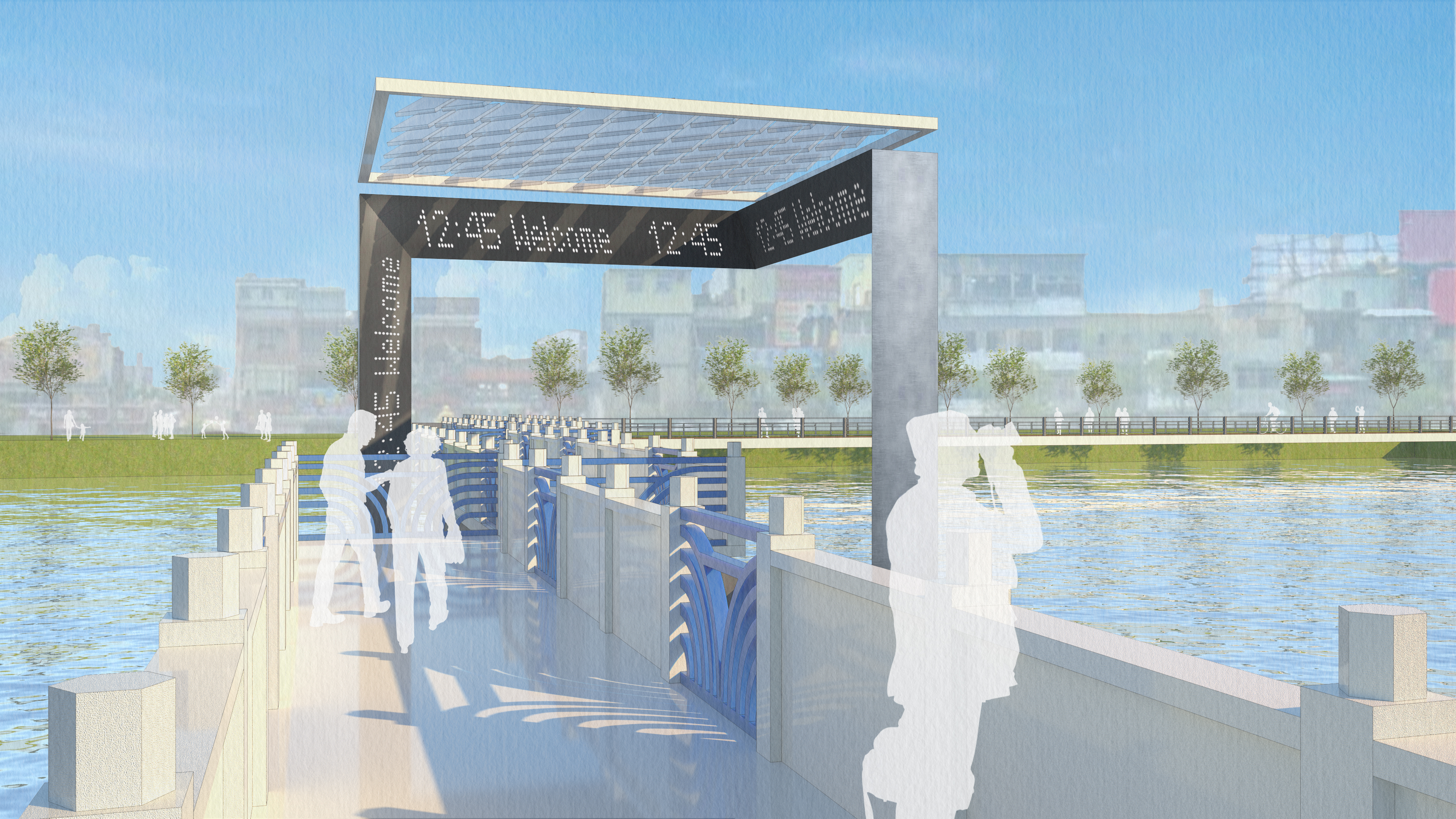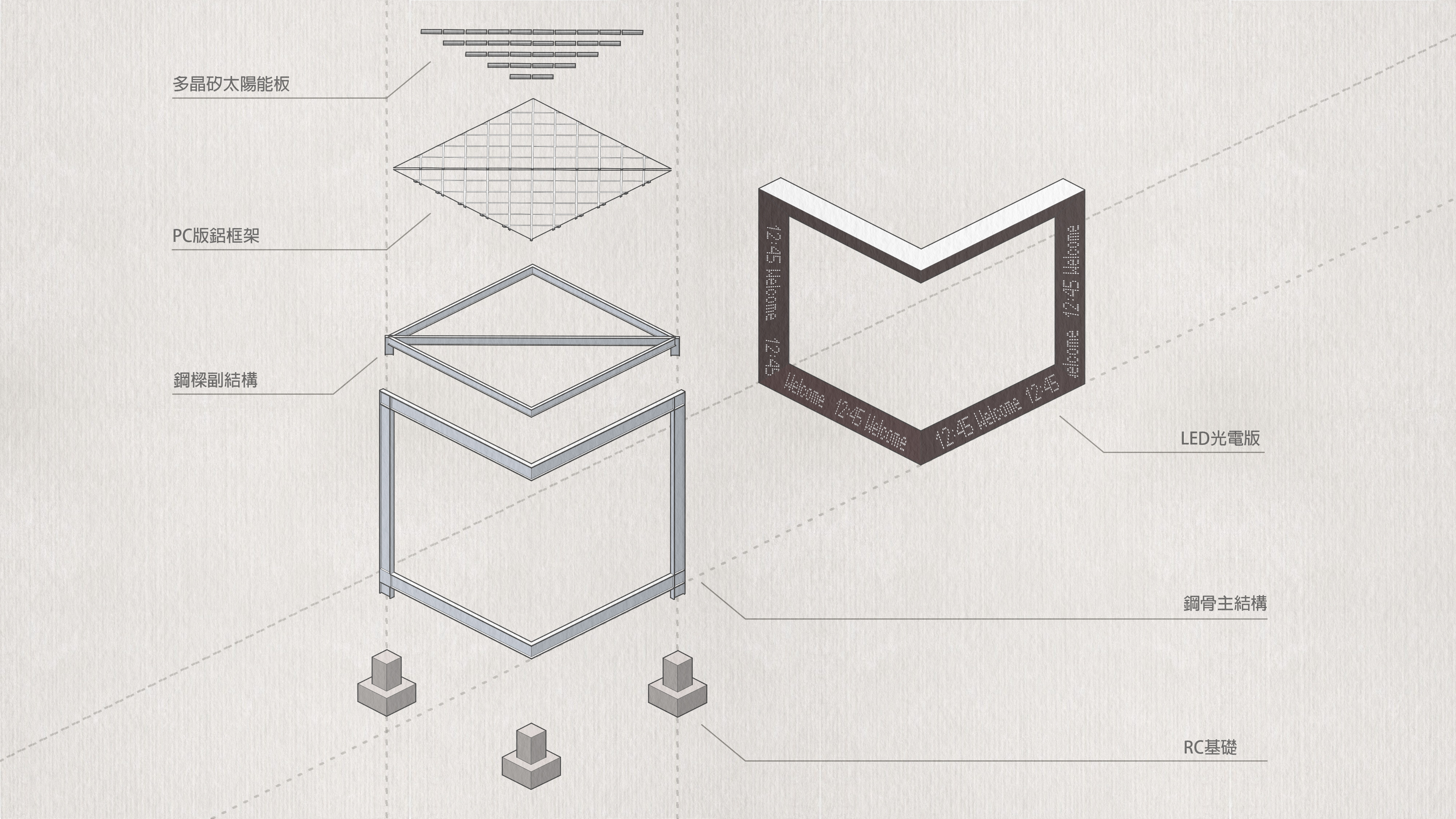
桃園。龍潭大池
Taoyuan。Longtan Dachi
桃園。龍潭大池
龍潭大池是龍潭區的地標景色之一,是一座佔地潭水湖潭三面環山,頗具山水之秀,可泛舟湖中欣賞湖景。而座落於池心島上的南天宮,月圓時天上明月倒映在池面上,而得「南天映月」的美名。一座融合儒佛道三教的廟宇,在池心彷彿與世隔絕。本案對於宗教空間的轉譯,在前往廟宇參拜的橋上增建地標鐘(構造物),是與人親近的尺度。
希望帶給使用者在穿越池的途中對於龍潭大池有更多的體驗和想像。概念上分為三部分:
A. 以中國園林構景手法之一 —「框景」,引導使用者從框架中得到想像,擴展有限景色的空間。讓視線能夠匯聚一方,成為旅途延伸的原點。為體驗空間的主要媒介。
B. 讓時鐘與人互動,不是單方面接受時鐘的資訊傳遞,使用者同時也能參與其中。地標鐘框出的景,在不同人事時,會有不一樣的詮釋。會因為今日的天氣或晴或陰、使用者和構造物的互動,傳達不一樣的故事,就像是一幅充滿變化和驚喜的作品。
C. 借日本神道教鳥居的意象 — 連接神明居住的神域與人類居住的俗世之通道,作為空間的過渡,成為連接和繫起情感的媒介。
在前往池心島的途中,視線所及地標鐘框出的畫面,能帶給使用者對於前往之處更多的期待。
最後,宗教跨越時間的傳承,與信仰者的距離不是那麼的遙不可及。在使用者介入這個空間的同時,同時成為描繪的景色其中的一部份。
Taoyuan。Longtan Dachi
Lungtan Big Pond is a prominent feature of Lungtan District. Situated in a valley surrounded by mountains on three sides, the lake boasts breathtaking scenery, offering the opportunity to enjoy the view while boating. Nantian Temple, located on the central island of the lake, is named "Nantian Reflecting the Moon" as the moonlight reflects on the lake's surface during full moon nights. The temple, a blend of Confucianism, Buddhism, and Taoism, stands as a serene entity isolated amidst the pond.
This project aims to translate the spiritual space into a tangible form by incorporating a landmark clock structure on the bridge to the temple. This addition is intended to bring visitors a more immersive and imaginative experience of Longtan Pond.
Concept:
A. Employing the "framing" technique from Chinese gardening, the aim is to direct and expand visitors' perceptions of the limited scenery. The framed view will serve as the starting point for their journey, becoming the primary means of experiencing the space.
B. The clock is designed to interact with people, allowing them not only to receive information from the clock but also to actively participate in it. The view framed by the landmark clock will be interpreted differently by each individual, evolving with the weather and user-structure interaction, resembling a dynamic piece of art offering ever-changing and surprising experiences.
C. Drawing inspiration from the torii of Japanese Shintoism - a passageway connecting the divine and human realms - this work serves as a transitional space and an emotional connector, similar to the torii's purpose. As visitors progress to Ikushin Island, the landmark clock frames their anticipation of the journey ahead.
The passage of time has not created a great divide between religion and its followers; upon intervening in the space, the user becomes an integral part of the depicted scenery.





